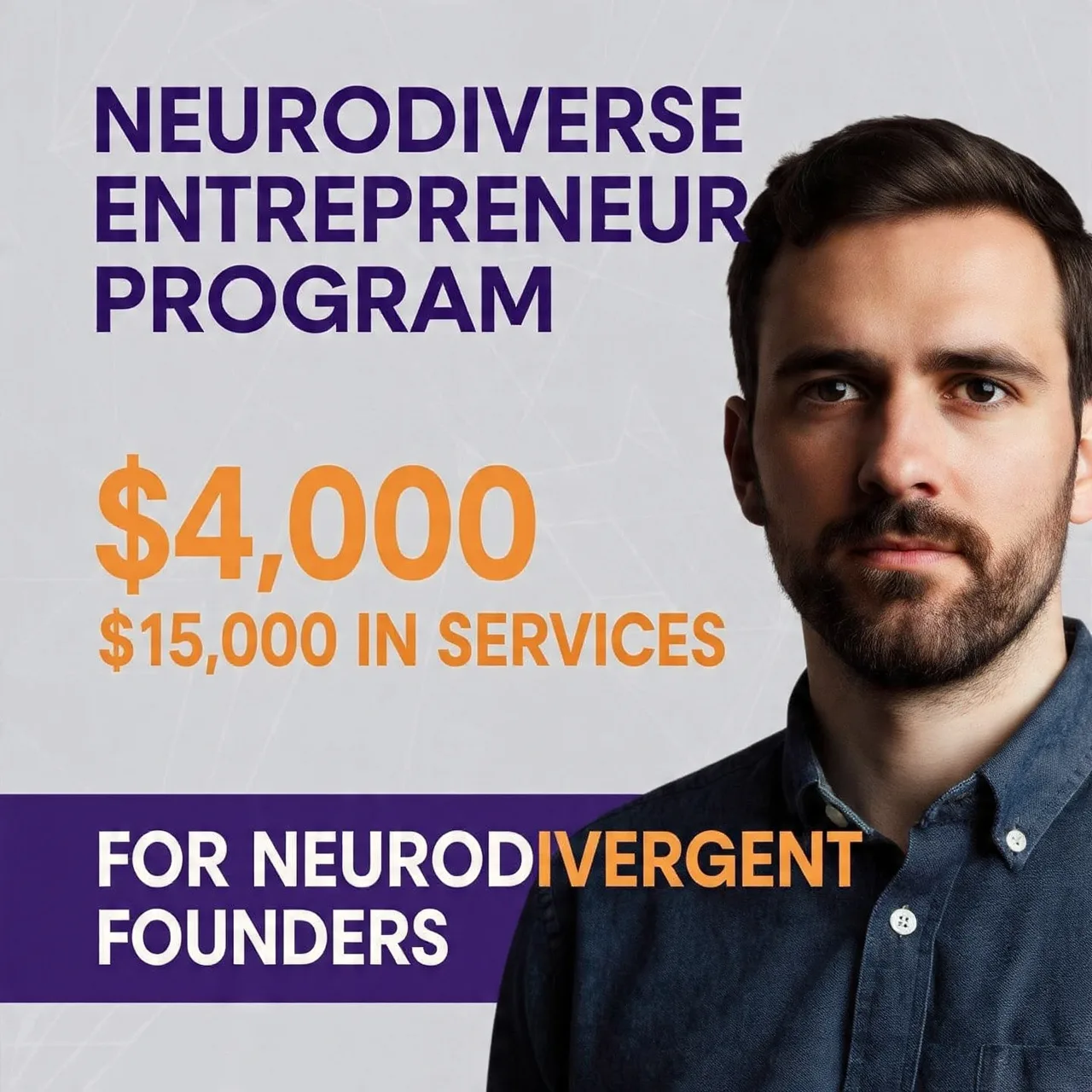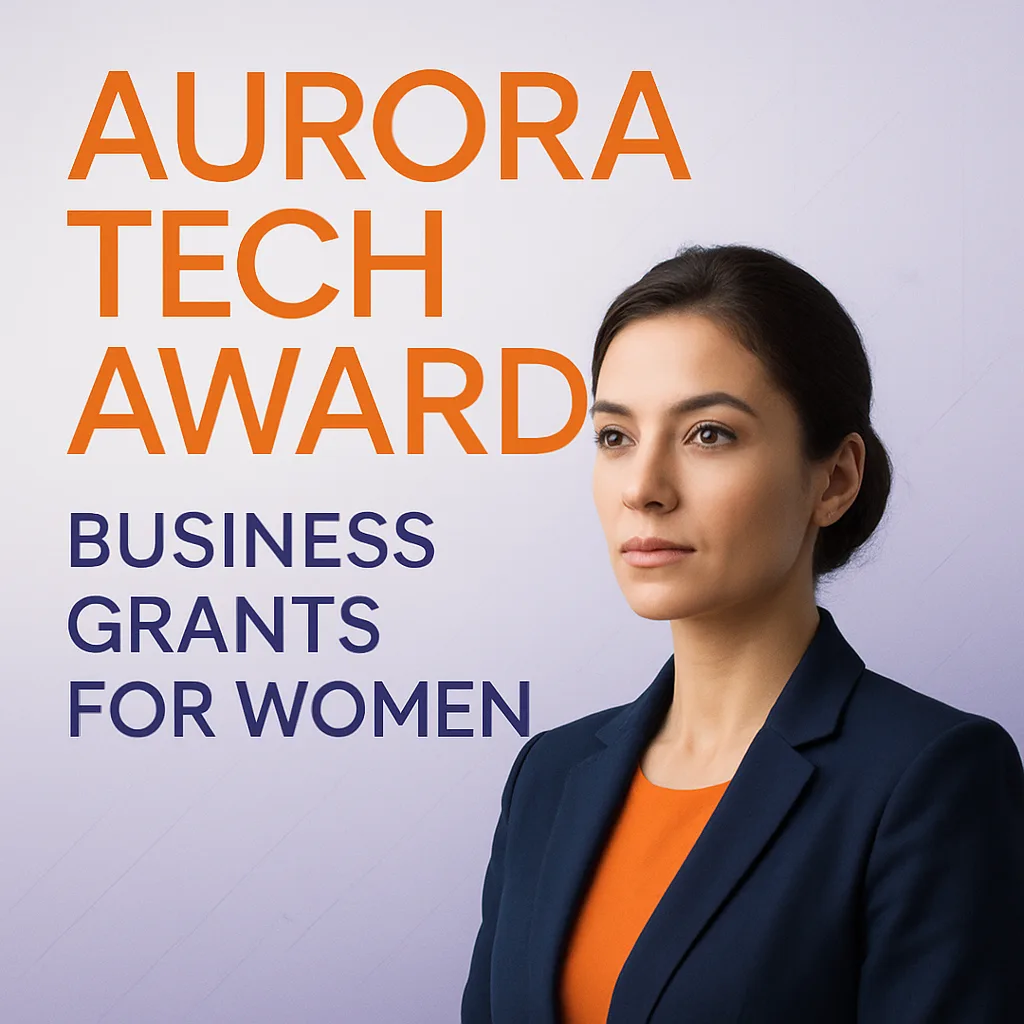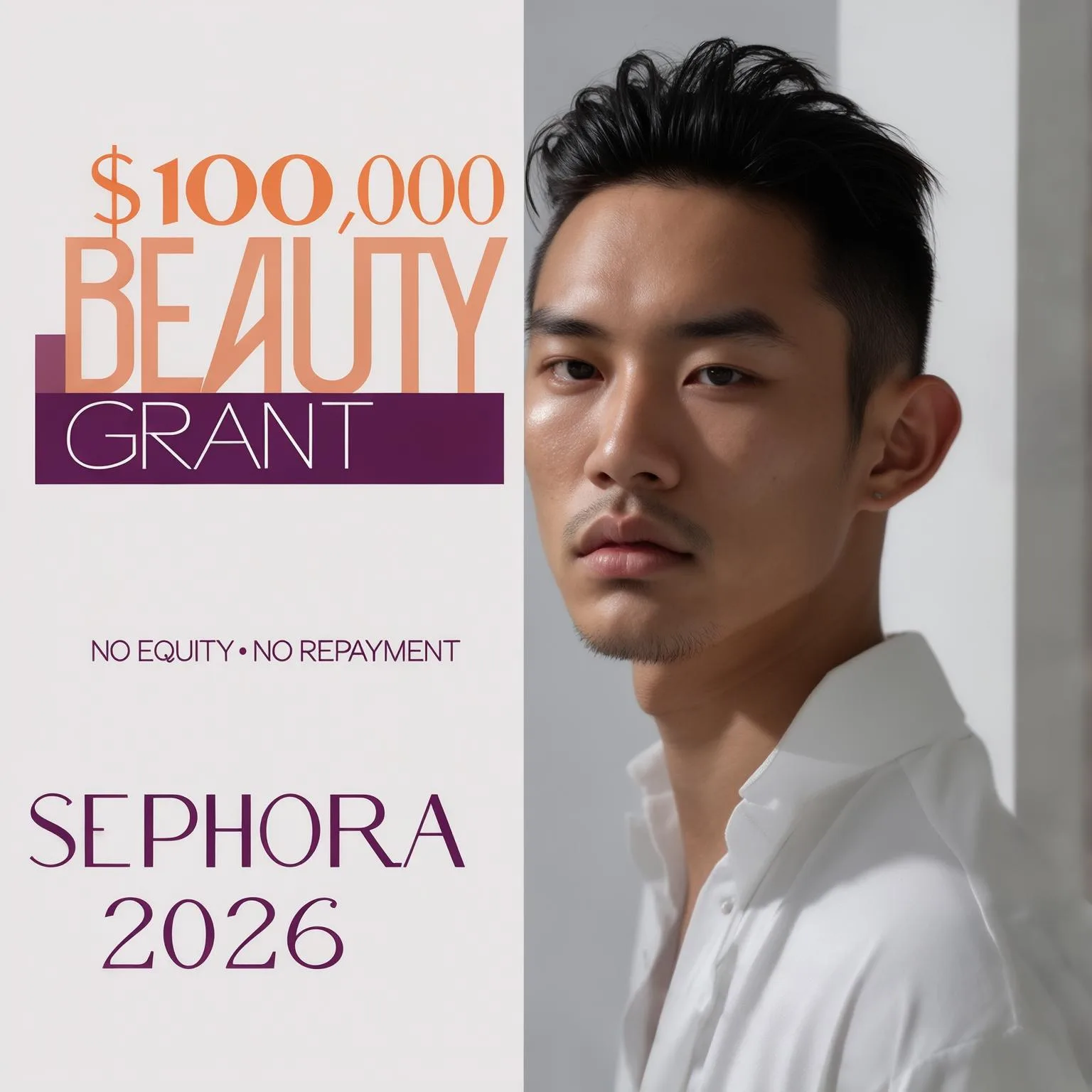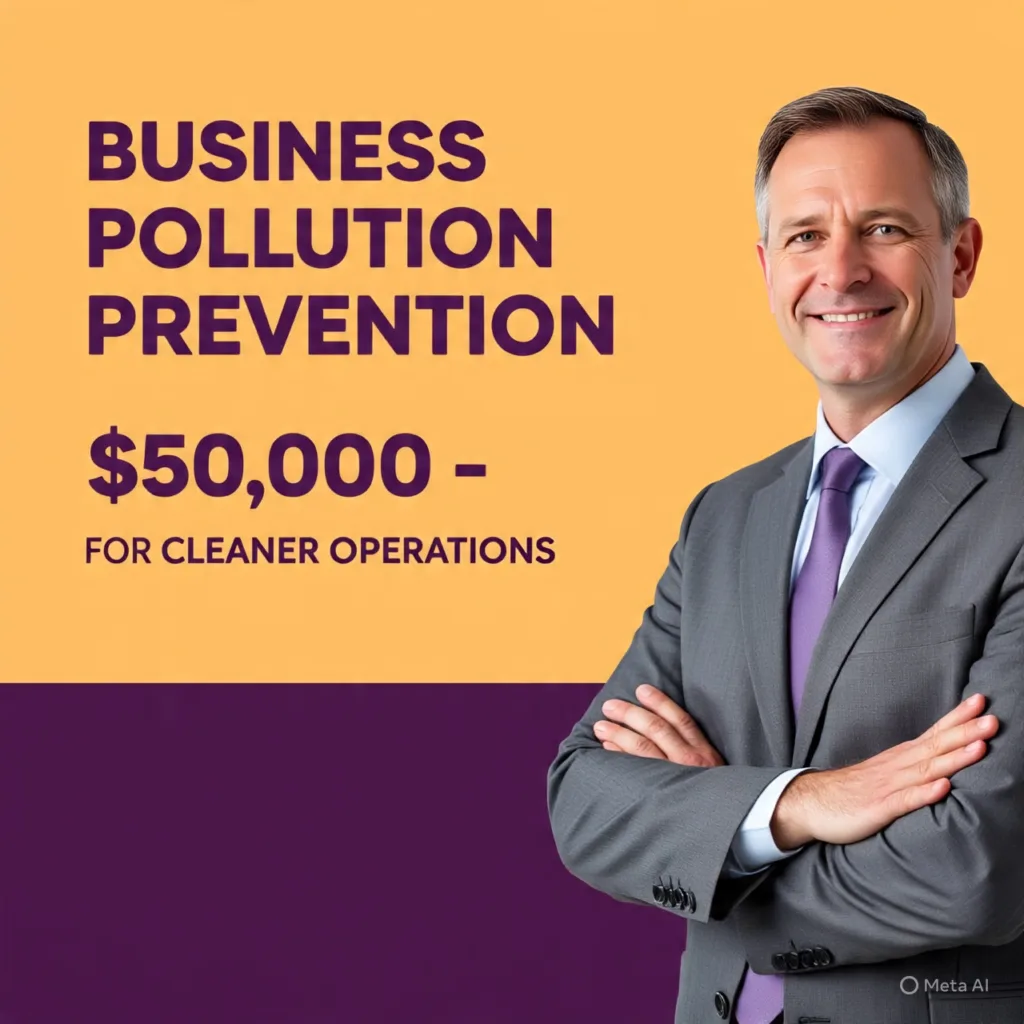
Business Pollution Prevention Program: Get $50,000 for Clean Equipment & Safer Chemicals
Get up to $50,000 grant to replace toxic chemicals & upgrade equipment. Minnesota businesses in Ramsey/Washington counties. Apply now – rolling deadline.
Grant Overview
Minnesota Businesses Grants to Ditch Toxic Chemicals and Upgrade to Cleaner Operations
The Business Pollution Prevention Program delivers exactly what cash-strapped Minnesota businesses need right now: up to $50,000 in Minnesota business grants to replace harmful chemicals and outdated equipment with safer, more efficient alternatives. This isn’t another complicated government program with impossible requirements – it’s a straightforward opportunity for businesses in Ramsey and Washington counties to improve their operations while protecting employee health and cutting long-term costs.
But here’s what most business owners don’t realize: this program comes with something even more valuable than the money itself. Waste Wise, the program’s technical partner, provides completely free consultation to identify the best equipment upgrades and chemical alternatives for your specific operation. Think of it as getting a $10,000 environmental consulting service thrown in at no charge.
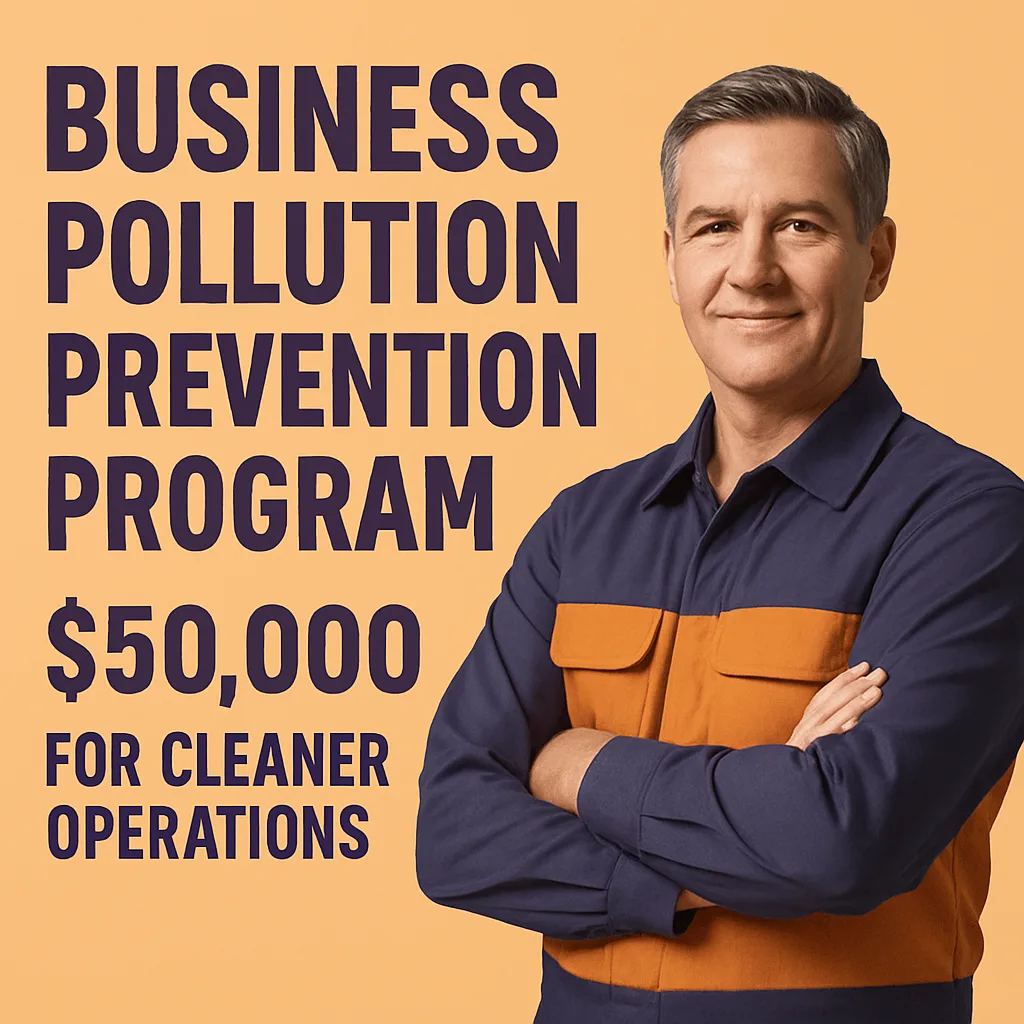
What Makes This Grant Different From Other Environmental Programs
Most pollution prevention grants focus on huge manufacturers or require extensive environmental compliance histories. The Business Pollution Prevention Program takes a different approach – they want to help businesses before they’re drowning in regulatory problems. If you use volatile organic compounds (VOCs), perchloroethylene (PERC), trichloroethylene (TCE), or produce fine particulate matter (PM2.5), you’re exactly who they’re looking for.
Q: Can my small auto body shop really qualify for this?
A: Absolutely. Auto body shops are actually perfect candidates, especially if you’re still using solvent-based paints.
Q: What if I’m not sure what chemicals I’m using?
A: That’s exactly why Waste Wise offers free technical assistance. They’ll walk through your operation and identify opportunities.
Q: Is this just for manufacturing businesses?
A: No. Dry cleaners, auto shops, printing companies, and any business using target chemicals can apply.
The Real Story Behind This Program
Ramsey/Washington Recycling & Energy launched this initiative because they saw too many small businesses struggling with rising hazardous waste disposal fees and outdated equipment that was literally making their employees sick. The program emerged from a simple recognition: the EPA has been increasing funding to help Minnesota businesses prevent pollution, but most of that money wasn’t reaching the businesses that needed it most.
Priority goes to businesses owned by people of color and those located in communities particularly vulnerable to pollution. But don’t let that discourage you if you don’t fit these categories – applications are accepted on a rolling basis, and there’s no artificial scarcity driving competition between applicants.
Why Equipment Upgrades Actually Pay for Themselves
The math on this program is compelling. Let’s say you’re an auto body shop spending $2,000 monthly on solvent disposal fees. A waterborne paint system might cost $40,000, but with a $30,000 BP3 grant (75% coverage), you’re looking at a $10,000 investment that eliminates most of your hazardous waste costs. You’re typically break-even within 8-12 months, then saving money every month after that.
But the real value goes beyond immediate cost savings. Newer equipment typically runs more efficiently, reducing energy costs. Your insurance premiums might drop when you eliminate hazardous chemicals from your facility. Employee retention improves when people aren’t worried about chemical exposure. And you position your business ahead of regulatory changes that are coming whether we like it or not.
Q: Can I apply if I’m not current on all environmental regulations?
A: Yes, if the BP3 project would bring you into compliance. They evaluate these situations case by case.
Q: What exactly counts as “matching funds”?
A: Your 25% match can come from cash, loans, other grants, or any legitimate funding source. In-kind work doesn’t count.
Q: How long do I have to complete the project?
A: 12 months from signing the contract, with possible extensions considered.
The Application Process Actually Works in Your Favor
Here’s where this program gets interesting. Instead of throwing you a 50-page application and wishing you luck, Waste Wise handles most of the heavy lifting. They help identify suitable projects, research chemical alternatives, find matching funding sources, and even assist with post-project documentation.
This support system exists because the program administrators understand something most grant makers don’t: small business owners are experts at running their businesses, not at writing grant applications. The technical assistance model ensures that good projects get funded rather than just well-written applications.
What Projects Actually Get Approved
Successful BP3 projects share three characteristics: they reduce targeted pollutants, they’re technically feasible, and they make business sense. The program has funded everything from dry cleaners converting from PERC to professional wet cleaning to manufacturers installing solvent recycling systems.
Auto body shops upgrading to waterborne paint systems represent some of the most successful projects. The technology is proven, the environmental benefits are substantial, and the business case is clear. Dry cleaners replacing PERC equipment get particularly strong consideration because PERC is an identified toxic air contaminant and potential human carcinogen.
Q: Do I need multiple contractor bids?
A: The application requires cost documentation, which typically means contractor bids and material lists.
Q: Can I start the project before getting approved?
A: No. You must wait for approval and sign the contract before beginning work.
The Timeline and What to Expect
Applications are accepted on a rolling basis, meaning you’re not competing against a deadline-driven pile of applications. Review times typically run 4-6 weeks, though complex projects might take longer. Once approved, you have 90 days to sign the contract with Waste Wise.
The reimbursement structure means you need upfront financing capability. You pay contractors and vendors, then submit paid invoices for reimbursement. This isn’t unusual for grant programs, but it’s something to plan for in your cash flow.
Common Mistakes That Kill Applications
The biggest mistake is trying to retrofit an unsuitable project into the program requirements. If your business doesn’t use target chemicals or produce target pollutants, don’t try to force it. The second mistake is underestimating the matching fund requirement – 25% might not sound like much, but on a $40,000 project, that’s $10,000 you need to secure.
Location restrictions are non-negotiable. The program only serves businesses in Ramsey and Washington counties. And while the program encourages businesses to apply even if they’re not perfectly compliant with environmental regulations, they do need to be making good faith efforts toward compliance.
Beyond the Money: The Long-Term Strategic Value
Smart business owners see this program as more than just equipment funding. It’s environmental insurance. Regulations around chemical use and air emissions are tightening, not loosening. The shift away from PERC and other toxic chemicals is accelerating, and businesses that wait until they’re forced to change face much higher costs and limited options.
The program also creates marketing advantages. Environmental responsibility isn’t just good citizenship anymore – it’s good business. Customers increasingly prefer working with companies that demonstrate environmental stewardship. Employees want to work for businesses that prioritize their health and safety.
Q: What happens if my project costs more than expected?
A: You’re responsible for cost overruns. The grant amount is fixed based on your approved budget.
Q: Can I apply for multiple projects?
A: The program limits funding to $50,000 per project, but businesses can potentially apply for separate projects.
Q: Do I have to allow site visits or publicity?
A: Yes. Grantees must be willing to have projects photographed and featured in program communications.
Look, putting together a compelling application for environmental funding can feel overwhelming when you’re already running a business. The equipment research, the emissions calculations, the regulatory compliance documentation – it’s a lot. If you’re serious about this opportunity and want expert guidance through the process, that’s exactly what we do at Grantaura. Sometimes having someone who speaks the grant language can make the difference between getting funded and getting frustrated. Just something to think about.
Donor: Ramsey/Washington Recycling & Energy
Focus: Business pollution prevention, chemical replacement, equipment upgrades, environmental health, workplace safety, Minnesota business grants
Region: Ramsey County, Washington County, Minnesota, United States
Eligibility:
– Business located in Ramsey County or Washington County, Minnesota
– Business uses target chemicals (VOCs, PERC, TCE) or produces target pollutants (ground level ozone, PM2.5, HAPs)
– Substantial compliance with environmental regulations (case-by-case consideration for businesses moving toward compliance)
– Proof of business or property ownership required
Benefits:
– Financial Award: Up to $50,000 or 75% of eligible project costs
– Free Technical Assistance: Complete project identification, chemical alternative research, and equipment selection through Waste Wise
– Grant Application Support: Help with funding applications, matching fund identification, and documentation
– Ongoing Support: Pre- and post-project assistance including site visits and follow-up
Deadline: Rolling applications accepted year-round
Terms:
– Matching Funds: Business must contribute minimum 25% of total project costs from non-BP3 sources (cash, loans, grants – in-kind costs not eligible)
– Project Completion: All work must be completed within 12 months of contract signing
– Reimbursement Basis: Funds distributed after project completion and documentation submission
– Documentation Required: Before/after photos, paid invoices, lien waivers, final inspection proof for permitted work
– Compliance: All work must meet local, state, and federal codes and permit requirements
Author: This analysis comes from Imran Ahmad, founder of Grantaura and a specialist in environmental funding opportunities. Having guided businesses through complex pollution prevention grants since 2021, Imran understands that environmental compliance isn’t just about following rules – it’s about positioning your business for long-term success while protecting your employees and community. The Business Pollution Prevention Program represents exactly the kind of strategic funding opportunity that smart business owners use to get ahead of regulatory changes rather than react to them. With over 300 successful grant applications and a 4.9 client rating, Imran offers consultations to help businesses navigate these technical funding opportunities.
Who Can Apply?
How to apply for this grant?
We are your trusted grant application partners. You can navigate the entire grant application process with our expert guidance through this simple 5-step process.
Step 1: Application Form
Fill out the "Apply for this grant" form with your information and grant requirements.
Step 2: Eligibility Assessment
Our grant experts will assess your eligibility and notify you via email.
Step 3: Expert Consultation
A dedicated grant expert will be assigned to discuss next steps for your application.
Step 4: Application Submission
Our expert will help you complete and submit your application with all required materials.
Step 5: Final Decision
The grant committee will make their decision and notify successful applicants.







